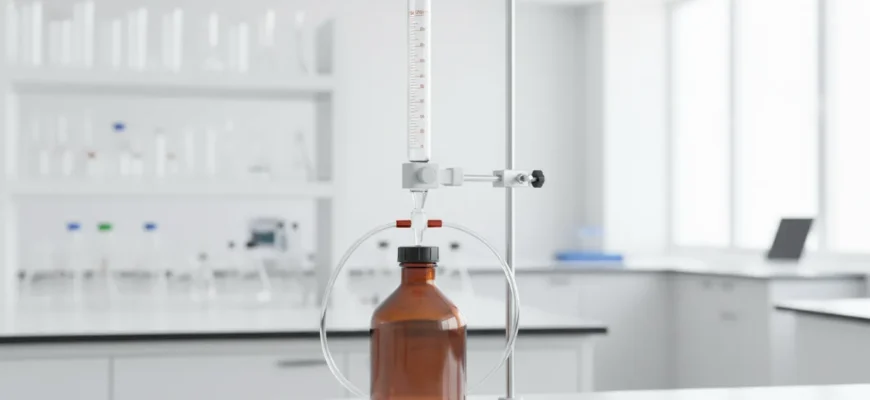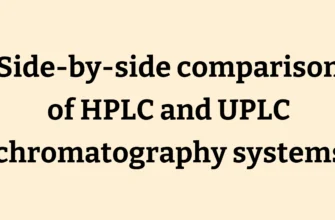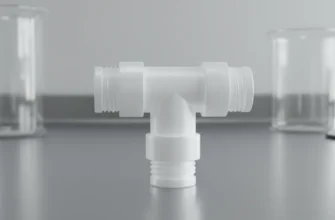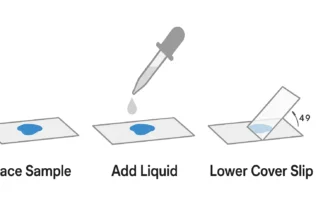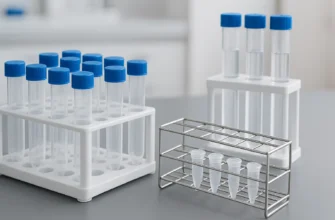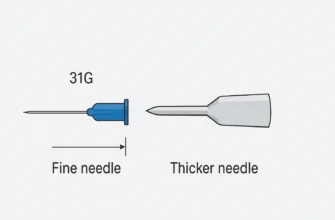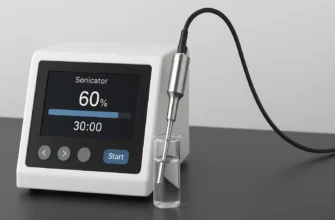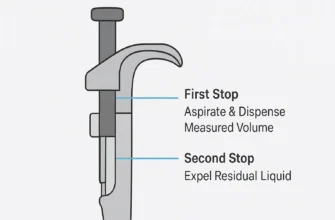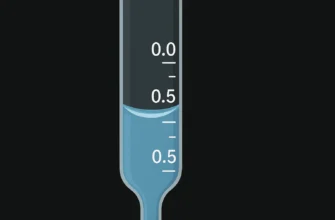Explore the Benefits of Using an Automatic Burette
Key Highlights
Here are the key takeaways about the benefits of an automatic burette:
-
An automatic burette streamlines titration processes by automating the filling and zeroing steps, significantly reducing setup time
-
It dramatically improves accuracy and precision compared to manual methods, with Class A models achieving tolerances of ±0.05 mL for 25 mL burettes
-
Key components include a reservoir bottle with rubber bulb or piston mechanism, a graduated borosilicate glass tube, and a precision PTFE stopcock
-
Proper setup, operation, and regular calibration using gravimetric methods with distilled water are essential for optimal performance
-
Using an analytical balance for calibration ensures dispensed volumes are accurate within specified tolerances
-
They enhance laboratory safety by minimizing chemical exposure, spills, and reducing handling of hazardous reagents
Introduction
Precision liquid handling forms the cornerstone of analytical chemistry, where accuracy determines the reliability of experimental results. For laboratories frequently performing titration experiments, traditional manual burettes have served well for decades, but automatic burettes represent a significant advancement in efficiency, consistency, and safety. These sophisticated instruments are engineered to streamline workflows, minimize human error, and deliver more dependable analytical data. This comprehensive guide explores how automatic burettes can transform modern laboratory operations through enhanced precision and user-friendly design.
What Is an Automatic Burette and How Does It Work?
An automatic burette is a precision volumetric instrument designed to dispense accurate and variable amounts of liquid reagents with minimal manual intervention. The defining characteristic is its self-zeroing capability – the instrument automatically refills to the zero mark from an attached reservoir, eliminating the need for manual filling and dramatically reducing the risk of spills and measurement errors.
The operational principle is elegantly simple yet highly effective. A squeeze bulb or piston mechanism draws titrant solution from the reservoir bottle up into the graduated glass tube. When the liquid level exceeds the zero mark, releasing the pressure allows excess solution to drain back into the reservoir, automatically establishing the zero point with remarkable precision. The solution is then dispensed through a precision stopcock, allowing for controlled delivery from rapid flow to individual drops.
Modern automatic burettes utilize either traditional bulb-operated systems or advanced piston mechanisms. Digital variants incorporate electronic components and motor-controlled dispensing for even greater precision and reproducibility.
Key Components and Mechanisms in an Auto Burette
Understanding the essential components enables effective operation and maintenance of automatic burettes. The reservoir system typically consists of a glass or chemically-resistant plastic bottle, ranging from 500 mL to 1000 mL capacity, connected via specialized tubing to the burette assembly.
The burette tube itself is manufactured from borosilicate glass 3.3, providing superior chemical resistance and thermal stability compared to standard glass. This material choice ensures consistent volumetric accuracy across diverse chemical applications while maintaining transparency for clear meniscus reading.
The stopcock mechanism represents the critical control component. Modern automatic burettes predominantly feature PTFE (polytetrafluoroethylene) stopcocks rather than traditional glass versions. PTFE stopcocks offer several advantages: they’re self-lubricating, eliminating maintenance requirements; chemically inert to most analytical reagents; and provide smooth, consistent operation without seizure risks.
Additional components include the filling mechanism (squeeze bulb or piston system), graduated scale markings calibrated according to ISO 385 standards, and mounting hardware for secure laboratory installation.
Types of Automatic Burettes Used in Laboratories
Standard Automatic Burettes
Standard models rely on manual reading of graduated scale markings and utilize squeeze-bulb filling mechanisms. Premium brands like BRAND’s Blaubrand and Silberbrand lines offer exceptional reliability with Class A and Class B accuracy grades. Class A burettes provide ±0.05 mL tolerance for 25 mL capacity, while Class B models have ±0.10 mL tolerance, suitable for general laboratory applications.
Digital and Electronic Burettes
Digital burettes replace graduated markings with electronic displays showing dispensed volumes, eliminating reading errors and parallax issues. Electronic burettes (E-burettes) represent the most advanced category, featuring motor-controlled piston movement, multiple pre-set dispensing speeds, and touchscreen interfaces.
Comparison Table
| Feature | Standard Automatic | Digital Burette | Electronic Burette |
|---|---|---|---|
| Volume Reading | Manual scale reading | Digital LCD display | Digital display with GUI |
| Dispensing Control | Manual stopcock | Manual piston wheel | Motor-controlled piston |
| Accuracy | Class A: ±0.05 mL | High precision | Highest precision |
| Speed Control | Single manual rate | Variable manual | Multiple pre-set speeds |
| Best Applications | General titrations | Precision analysis | High-throughput labs |
| Cost Range | $300-800 | $800-1500 | $1500-3000+ |
Main Advantages of Using an Auto Burette Over Manual Burettes
Enhanced Accuracy and Precision
The primary benefit of automatic burettes lies in their superior measurement reliability compared to manual alternatives. The automated filling and zeroing process eliminates multiple sources of human error, including inconsistent starting volumes, air bubble entrapment, and refilling mistakes.
Key accuracy improvements include:
-
Elimination of parallax error: The fixed zero point and consistent meniscus positioning reduce reading variations between operators
-
Reduced handling variability: Automated systems minimize volume losses from spillage during manual refilling
-
Consistent flow control: Precision PTFE stopcocks provide uniform dropwise dispensing capabilities
-
Improved reproducibility: Self-zeroing mechanisms ensure identical starting conditions for every titration
Efficiency and Safety Benefits
Automatic burettes deliver significant operational advantages beyond accuracy improvements. The closed-system design, where titrant is drawn directly from sealed reservoirs, substantially reduces operator exposure to chemical fumes and hazardous reagents.
Safety advantages include:
-
Minimal chemical contact: Enclosed dispensing systems reduce dermal and inhalation exposure
-
Elimination of spill risks: Automated filling prevents accidents during manual solution transfers
-
Chemical compatibility: PTFE components resist attack from acids, bases, and organic solvents
-
Ergonomic operation: Simple squeeze-bulb activation reduces operator fatigue compared to manual filling
Efficiency gains include:
-
Faster throughput: Elimination of manual filling and zeroing procedures saves substantial time per analysis
-
Reduced training requirements: Simplified operation allows technicians to achieve proficiency quickly
-
Lower skill dependency: Automated systems reduce reliance on operator expertise for consistent results
Factors to Consider When Choosing an Auto Burette for Your Lab
Essential Specifications
Volume capacity represents the primary selection criterion, with common sizes including 10, 25, 50, and 100 mL. Choose capacity based on typical titration volumes – 25 mL burettes suit most analytical work, while 50 mL models provide extended range for larger samples.
Accuracy class determines measurement precision. Class A burettes offer superior accuracy (±0.05 mL for 25 mL capacity) essential for critical analytical work, while Class B models (±0.10 mL tolerance) suit routine applications.
Material compatibility ensures long-term reliability. Borosilicate glass 3.3 provides excellent chemical resistance, while PTFE stopcocks handle aggressive reagents including concentrated acids and oxidizing agents.
Performance Features
Graduation clarity affects reading accuracy – look for clear, permanent markings with high contrast. Stopcock quality determines operational smoothness and maintenance requirements – PTFE systems offer superior performance compared to glass alternatives.
Base stability prevents tipping accidents – ensure reservoir bottles feature stable, wide bases. Spare part availability supports long-term operation – verify that replacement components like stopcocks and dispensing tips are readily available.
Proper Setup and Operation for Reliable Titration Results
Step-by-Step Setup Procedure
-
Initial cleaning: Thoroughly rinse the burette assembly and reservoir with distilled water, allowing complete drainage
-
Assembly: Securely connect the burette to the reservoir bottle, ensuring all connections are tight
-
Reservoir filling: Carefully add titrant solution to the reservoir bottle
-
System priming: Squeeze the filling bulb to draw solution into the burette, filling past the zero mark
-
Air bubble removal: Check for trapped air bubbles in the stopcock and tip areas
-
Zero setting: Release bulb pressure to allow automatic drainage back to the zero mark
-
Initial verification: Confirm the meniscus sits precisely at the zero graduation
Best Practices for Calibration
Regular calibration ensures measurement accuracy throughout the burette’s operational range. The gravimetric method using distilled water provides the most reliable calibration approach.
Calibration procedure:
-
Equipment preparation: Use an analytical balance reading to 0.1 mg and measure water temperature with ±0.1°C accuracy
-
Mass determination: Weigh empty flask, dispense specific volumes (10, 20, 30, 40, 50 mL), and record masses
-
Temperature correction: Apply water density correction factors based on measured temperature
-
Volume calculation: Convert measured masses to true volumes using the formula: Volume = Mass × Z-value (density correction factor)
-
Error assessment: Compare indicated volumes with true dispensed volumes
-
Documentation: Record calibration data and correction factors for future reference
Cleaning and Maintenance for Optimal Performance
Routine Cleaning Procedures
Proper cleaning prevents reagent cross-contamination and maintains volumetric accuracy. After each use, immediately flush the system with distilled water to prevent chemical buildup.
Standard cleaning protocol:
-
Empty reservoir: Safely dispose of remaining titrant according to laboratory protocols
-
Water flush: Rinse reservoir and burette multiple times with distilled water
-
Cleaning solution: Use appropriate laboratory detergents for stubborn residues
-
Stopcock cleaning: Disassemble PTFE stopcocks if necessary for thorough cleaning
-
Final rinse: Perform final distilled water rinse to remove all cleaning agents
-
Drying: Allow complete air drying before storage or next use
Preventive Maintenance
Regular inspection helps identify potential issues before they affect measurement accuracy. Check for leaks around stopcock connections, inspect glassware for chips or cracks, and verify smooth piston operation in advanced models.
Storage considerations extend instrument life – store burettes vertically in designated racks, maintain stopcocks in slightly open positions to prevent sticking, and protect from temperature extremes.
Troubleshooting Common Issues
Volume Delivery Problems
Symptom: Inaccurate volume dispensing
Solutions: Recalibrate using gravimetric method; check for air bubbles in system; inspect stopcock for wear or damage
Symptom: Inconsistent zero setting
Solutions: Clean filling mechanism thoroughly; check reservoir connection integrity; verify bulb or piston function
Mechanical Issues
Symptom: Stopcock leakage
Solutions: Inspect PTFE components for wear; ensure proper assembly; replace worn seals if necessary
Symptom: Difficult dispensing control
Solutions: Clean stopcock mechanism; lubricate glass components if applicable; check for chemical deposits
Conclusion
Automatic burettes represent a transformative advancement in analytical chemistry instrumentation, offering substantial improvements in accuracy, efficiency, and laboratory safety compared to traditional manual systems. Through automated filling and zeroing mechanisms, these instruments eliminate common sources of human error while providing consistent, reproducible results essential for quality analytical work.
The integration of modern materials like borosilicate glass 3.3 and PTFE stopcocks ensures chemical compatibility across diverse applications while minimizing maintenance requirements. Whether selecting standard automatic models for routine work or advanced electronic systems for high-throughput operations, these instruments deliver measurable benefits in both analytical quality and operational efficiency.
By understanding proper setup procedures, calibration methods, and maintenance practices, laboratories can maximize the performance advantages of automatic burettes. As analytical requirements continue to evolve toward higher precision and greater throughput, automatic burettes provide the reliability and convenience necessary for modern laboratory operations.
Frequently Asked Questions
Can automatic burettes be used for both manual and semi-automatic titrations?
Yes, automatic burettes are perfectly suited for both manual and semi-automatic titration procedures. They automate the filling and zeroing processes while maintaining manual control over dispensing through the precision stopcock. This combination provides the control advantages of manual burettes with enhanced speed and accuracy, making them versatile instruments that require proper calibration for optimal results.
How do digital auto burettes compare to standard models?
Digital burettes offer superior precision compared to standard automatic models by replacing manual scale reading with electronic displays, significantly minimizing reading errors and parallax issues. While both types require regular calibration to ensure accuracy, digital burettes often provide finer dispensing control and direct volumetric readings. Electronic models with motor-controlled pistons represent the highest precision category, ideal for research and quality control laboratories requiring maximum accuracy.
Which brands are considered reliable for laboratory use?
BRAND represents the most respected manufacturer in laboratory glassware, with Blaubrand and Silberbrand product lines offering exceptional quality and accuracy for automatic burettes. These German-manufactured instruments comply with ISO 385 and DIN standards, providing Class A and Class B accuracy grades. Other reliable manufacturers include Eisco, Witeg, and various specialized laboratory suppliers who produce dependable equipment suitable for diverse analytical applications. When selecting burettes, prioritize suppliers offering ISO-certified products with documented calibration certificates.

